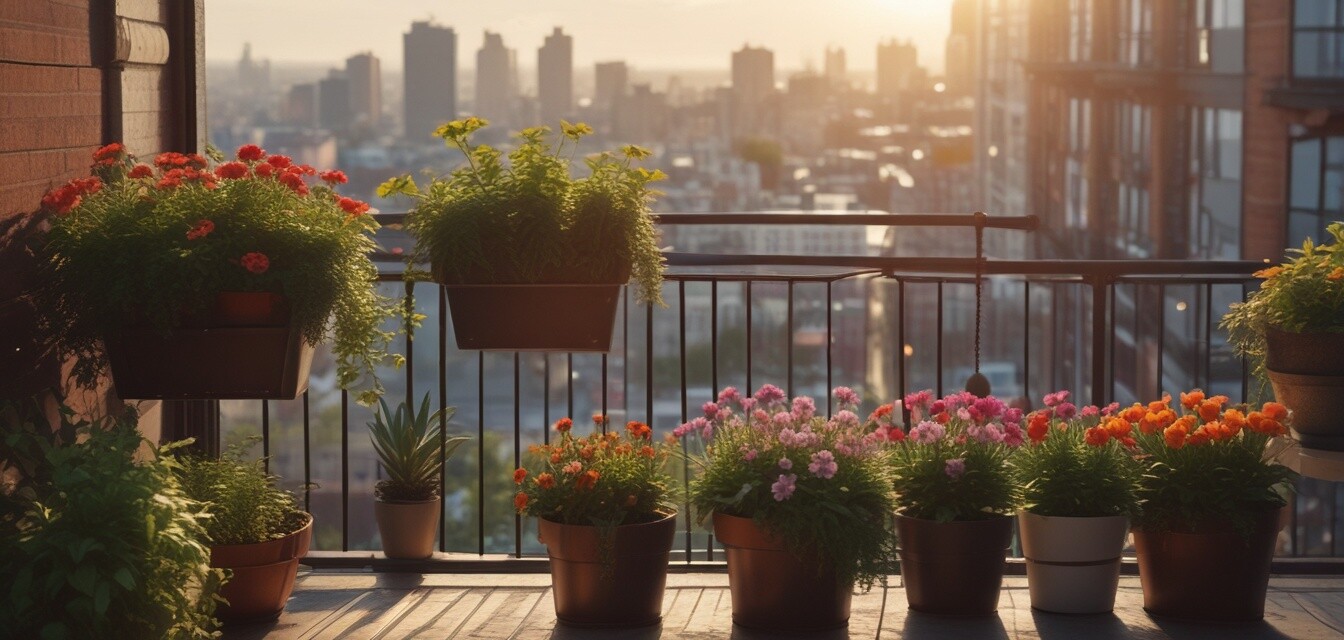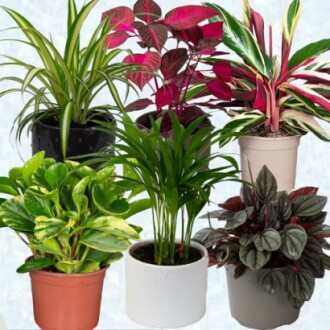
Comprehensive Guide to Self-Watering Containers
Key Takeaways
- Self-watering containers ensure consistent moisture levels for plants.
- They are ideal for urban gardening, especially on balconies.
- Choosing the right container involves considering size, material, and specific plant needs.
- These containers reduce the frequency of watering and help prevent overwatering.
- Different types of self-watering mechanisms cater to various plant species.
If you're looking to create a thriving garden on your balcony, self-watering containers can be a game-changer. They allow you to enjoy gardening even with a busy lifestyle. In this comprehensive guide, we'll explore what self-watering containers are, their benefits, and how to choose the best ones for your balcony garden.
What are self-watering containers?
Self-watering containers are gardening pots that feature a built-in reservoir at the bottom, allowing plants to draw water as needed through a wicking action. This system maintains optimal moisture levels, ensuring your plants stay hydrated without requiring frequent watering.
Benefits of self-watering containers
| Benefits | Description |
|---|---|
| Consistent Moisture | Plants receive a constant supply of moisture, reducing stress during dry spells. |
| Water Efficiency | They reduce water waste as excessive runoff is minimized. |
| Less Frequent Watering | Ideal for busy individuals, as they require less maintenance. |
| Prevents Overwatering | Built-in drainage prevents roots from sitting in water, reducing the risk of rot. |
| Versatility | Various designs and sizes suit different plants and aesthetic preferences. |
How to choose the best self-watering containers
Selecting the right self-watering containers involves several considerations:
- Size: Choose a size that fits your plants—larger plants may require bigger containers.
- Material: Look for durable materials like plastic, ceramic, or metal that suit your balcony's climate.
- Design: Aesthetics matter! Choose containers that complement your balcony decor.
- Type of plants: Consider plants' moisture needs; some like drier environments whereas others prefer constant moisture.
- Reservoir Size: Larger reservoirs mean longer periods between water refills.
Popular self-watering containers
Here are some top self-watering containers available on the market:
6 x Pet Friendly House Plants
A vibrant collection of non-toxic house plants, ideal for pets. Perfect for adding life to your indoor or balcony space.
Learn MoreSetting up your self-watering containers
Setting up self-watering containers is straightforward. Follow these steps:
- Choose the right location on your balcony with adequate sunlight.
- Fill the reservoir with water; make sure it’s accessible for refilling.
- Add a soil mix suitable for your chosen plants (consider drainage).
- Plant your flora, ensuring roots can access both soil and water reservoir.
- Monitor water levels periodically and refill as necessary.
Tips for successful balcony gardening
Beginner Tips
- Start with easy-to-grow plants like herbs or succulents.
- Check your local climate for the best planting times.
- Ensure your containers have proper drainage to avoid root rot.
- Fertilize your plants according to their specific needs.
- Regularly check for pests to keep your garden healthy.
Common issues with self-watering containers
While self-watering containers are fantastic, they can have a few challenges:
- Clogged drainage: This can lead to overwatering. Regularly check to ensure drain holes are clear.
- Root overgrowth: If left unchecked, roots may block water access to the reservoir.
- Algae build-up: This can happen in reservoirs exposed to sunlight. Regularly scrub the container’s inside.
Final thoughts
Self-watering containers can significantly enhance your balcony gardening experience. They provide a perfect solution for busy urban dwellers, ensuring plants thrive even without constant attention. By understanding their benefits and following our tips, you can create a vibrant green space on your balcony to unwind and enjoy.
Pros
- Ideal for busy lifestyles.
- Efficient water usage.
- Healthy plants with consistent moisture.
- Variety of styles and sizes available.
Cons
- Initial setup can seem costly.
- Requires regular maintenance to avoid issues.
- Some containers may not match all aesthetic preferences.
